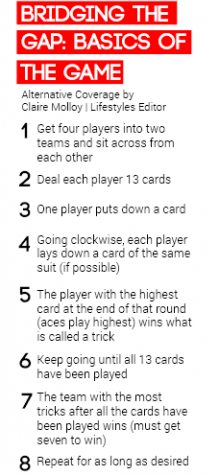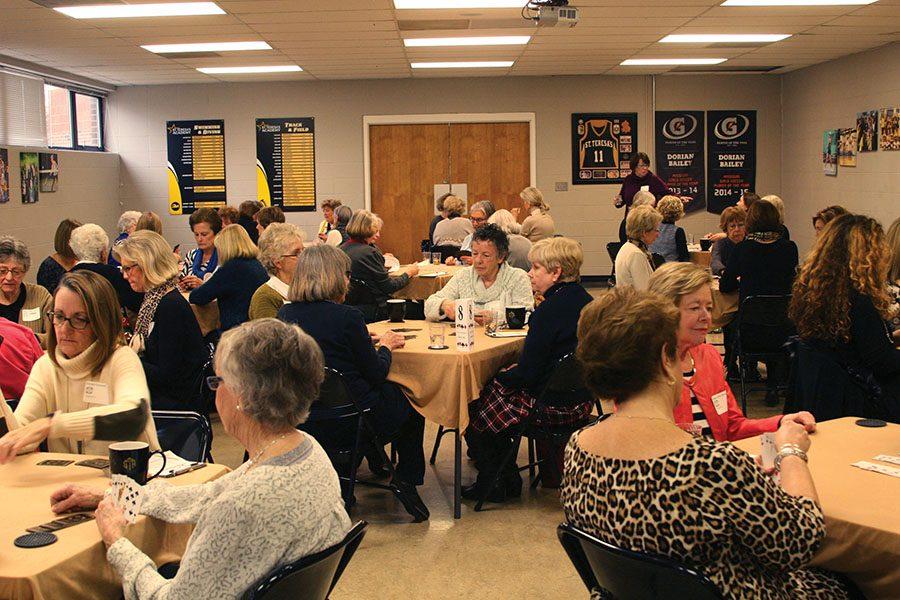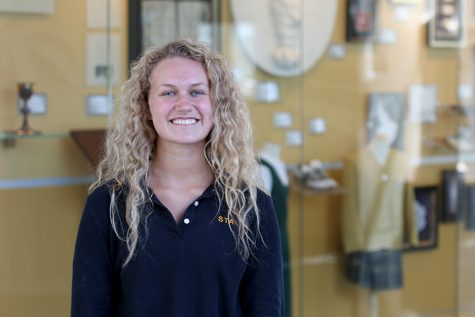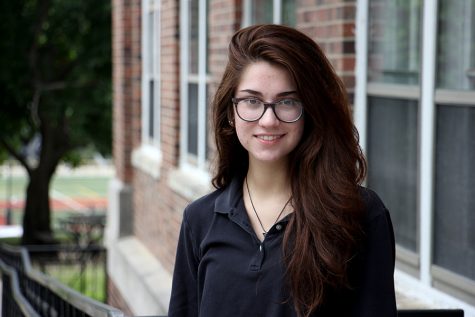STA bridge club deals to sisterhood
Each month, STA’s bridge club, consisting of alumnae, grandmothers and mothers, meets, sparking a community in and of itself on campus.
March 24, 2017
photos by Cassie Hayes
story by Zoe Butler
Nancy’s eyebrows raise, her eyes light up and her smile widens as she looks at Barb from across the table.
“Remember the time we threw Comet [bathroom cleaner] upstairs all over where they used to board – those bathrooms upstairs? We threw it all over the place.”
They both burst into a fit of laughter as they continue to reminisce about their high school years at STA. Having been best friends since grade school, Nancy Connell and Barb Flynn’s friendship didn’t end with their graduation from STA in 1964. Now, they use STA’s monthly Bridge Club as another way to keep in touch.
“[We don’t see each other] so much with our kids grown up, but since our 50th [high school anniversary] we’ve been together more,” Flynn said.
This is a similar situation for many of the women involved in this club. Having some ties with STA, whether that being alumnae, having kids that went there, or grandkids that currently attend, one of these women described seeing these familiar faces as “sensory overload.”
The idea to start a bridge club at STA first came from STA president Nan Bone, originally thinking it would be a good idea to teach the students. They decided that the girls probably wouldn’t be receptive to the idea, and it was then that they thought to make it a game for the alumna. This idea was put into practice shortly after by Jean McDonnell, Jane Quarnstrom and Michelle Meurer and overseen by Kathleen Barry.
In addition to the monthly meetings, the club also funds a scholarship for a girl at STA, what is referred to as an “annual scholarship.” This means that after the women have paid their dues, they give whatever money they have left, resulting in a scholarship that is anywhere up from $1,000.
Although bridge club co-founder Jane Quarnstorm stresses a non-competitive environment, according to Sheila Eikermann, bridge player and grandmother of junior Ruthie McKee, there is a different idea amongst most of the other women.
“Bridge is always competitive,” Eikermann said. “And that’s not just us; everybody that knows how to play bridge wants to win.”
Eikermann and Schloegel have been playing bridge at STA as a team since the beginning, and before that they’ve been on several different teams. But where they first learned to play was at home with their family.
“ We learned to play bridge at home from our mom and dad,” Eikermann said. “We were probably about 10 or 12 and there were four girls, so as one would move out and go to college, then the next girl would move up. So, I was the fourth girl. And I remember that they wanted to play what seemed like every night, but just for an hour. I’d be saying, ‘But I have homework!’ and they’d say, ‘But just for an hour!’ It was a family game.”
We learned to play bridge at home from our mom and dad,” Eikermann said. “We were probably about 10 or 12 and there were four girls, so as one would move out and go to college, then the next girl would move up. So, I was the fourth girl. And I remember that they wanted to play what seemed like every night, but just for an hour. I’d be saying, ‘But I have homework!’ and they’d say, ‘But just for an hour!’ It was a family game.”
According to Eikermann, the teams consisting of sisters have an upper hand. One of the other teams that shares this advantage is STA president Nan Bone and her sisters Barb, Kathy and Diane.
“I think that’s why we [win], I really do think that it’s just because we’ve played so much together,” Eikermann said. “But Michele and I have almost always been opponents, and I’m the little sister, so it’s very fun for me to play with Michele instead of against her.”
Eikermann and Schloegel keep up their family games with a Monday night poker night, where all of their siblings gather at their eldest sister’s house.
“It’s always competitive, but we play for pennies so the most you’re gonna win or lose would be $2,” Eikermann said.
“Usually it’s 30 cents,” Schloegel said.
“You don’t get too mad at anybody,” Eikermann said.
While they continue to play with their siblings, they are beginning to teach the next generation what they’ve learned, hoping to keep the tradition of family card games. According to Eikermann, both of their daughters have agreed to learn, now they just have to do the hard part of teaching them.
In addition to STA bridge club, most of the women know each other through other groups, many of them being other bridge clubs.
“I was just asked to be in a prayer group [with women from here],” Eikermann said. “And I am in a prayer group with several of them [already], and we have a book club with almost everybody here from this group… I’m in two [bridge clubs] that have been around forever, but one I quit when I was having my fourth child.”
It was here that a woman cut in to say that “Patty’s driving tonight” and Eikermann explained that this was for “another bridge club.”
Virginia Coppinger, bridge player and grandparent of sophomores Addie and Kate Coppinger, says that she takes every chance she can to play bridge.
I’ll tell you one thing, the friends you meet at St. Teresa’s remain friends the rest of your life.
— Barb Flynn
“There’s a lot of us that are in different bridge groups, like at Carriage Club every Thursday,” Coppinger said. “You gotta keep going. You gotta keep that mind thinking.”
Although STA’s bridge club can get competitive, it is nothing compared to Kansas City Bridge Studio, “Kansas City’s premiere bridge club,” which is designed for daily games, lessons and special events.
“People go to play for master bridge points,” Eikermann said. “We don’t go to that place, because we don’t want to be at that level of competition. Very competitive. Like you call the director when somebody makes a mistake instead of just saying ‘whoops.’ So we don’t want to be there. And there are probably other places [like that].”
STA’s club’s intimacy is an attractive quality in many of these women’s eyes, one woman even described it similar to a speed dating environment where you “meet for five minutes and move on.” But the most enticing feature is seeing the faces of women they used to see at this same place many years ago.
“We can’t tell a lot of [our high school stories],” Flynn said. “We can’t because my sister’s the president. I’ll tell you one thing, the friends you meet at St. Teresa’s remain friends the rest of your life.”










